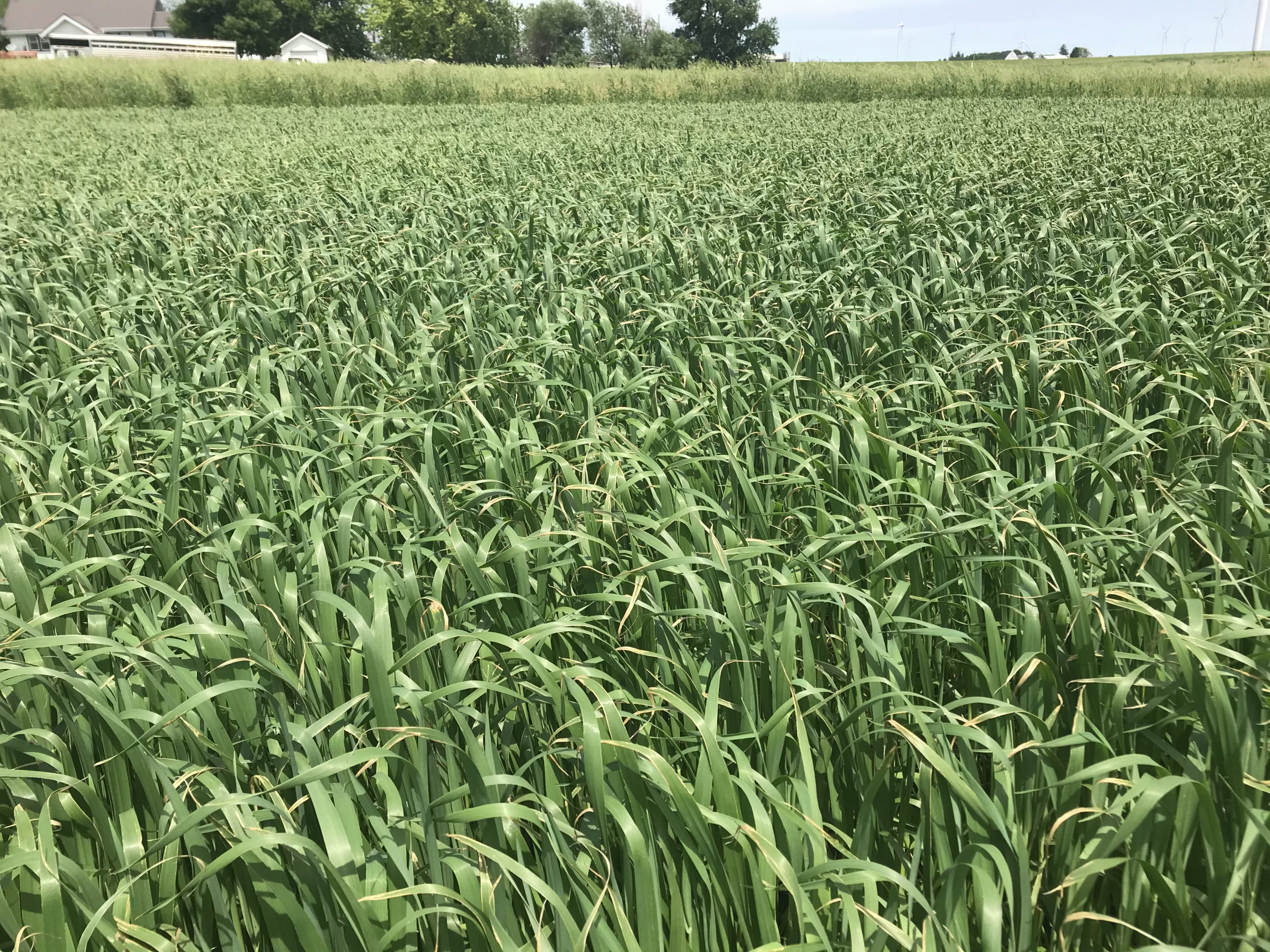What’s Wrong with my Oats? (And What is Abiotic Stress?)
by Margaret Smith, PhD ∙ Agronomist
We began receiving telephone calls about disease symptoms on oats around June 4. Terminal leaf tip and outer margins were browning. Entire fields showed a brownish cast across the top of the canopy.
What was attacking these oats and what could be done about it?
All plants, including oats, can be stressed during the growing season by a number of factors. Insects, disease organisms, and the accidental cows in the oat field are biological (“biotic”) stressors that can cut into crop yields, but non-biological (“abiotic”) stressors also impact our crops almost every year.
Examples of Abiotic Stressors
Abiotic stressors include:
- Very high and very low temperatures, including frost
- Too much or too little water
- Salinity
- Heavy metals
- Ultraviolet (UV) radiation
These abiotic stressors can interact; for instance, high temperatures with low available soil water is much more stressful that if plenty of soil water is available to plants. Wind can cause stress because it increases the ET or evapotranspiration demand of all plants, which is the water loss from leaves.
The dry, brown leaf tips and margins that farmer observed on their oats aren’t characteristic of any disease or insect damage. They appeared to be caused by abiotic factors.
We have had some tough weather for crops in the last week and a half in northern Iowa and parts of southern Minnesota. The first two days of June were hot and windy. At Clear Lake, Iowa, temperatures on June 1 climbed to above 90°F. Wind was the real stressor, though, that day; it blew consistently >30 mph for 12 hours, straight. The next day, June 2, temperatures climbed again to 90°F-95°F for six hours with wind speeds from 25-35 mph.
It appears that the combination of hot temperatures and high winds increase the evapotranspiration (ET) rate beyond the capacity of some oats to keep their leaves supplied with adequate moisture. So, we experienced a small amount of leaf tissue desiccation and death.

Photo 3: VNS oats (left) showing stress. Reins oats (right) showing no stress symptoms. Credit: Scott Ausborn, Ida Grove, Iowa.
These conditions were a lot for oats to take and NOT show some stress symptoms. Oats planted in early to mid April were at the mid-boot stage on June 1. Diagnosis of disease and abiotic stress can be difficult. Not all oat varieties showed these same symptoms. Oat varieties Saddle, Hayden, and Deon all exhibited the brownish cast across their canopies, while the variety Reins, didn’t. Why do variety differ in the susceptibility to hot winds and moisture stress? We’re not sure. Difference in growth stage affect water demand. In addition, some varieties may have a more waxy cuticle (outer leaf coating) than others, which slows ET.
Good news: oat leaf damage, though very noticeable, was minor, and most oat seedings were still putting out new leaves following those stressful days. I doubt whether yield will be impacted by these leaf symptoms.
Resource
Abiotic Stresses: General Defenses of Land Plants and Chances for Engineering Multistress Tolerance, He, Mei, C-Q He and N-Z Ding.


